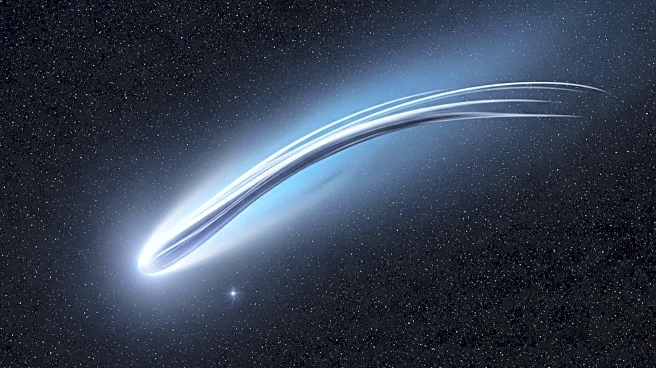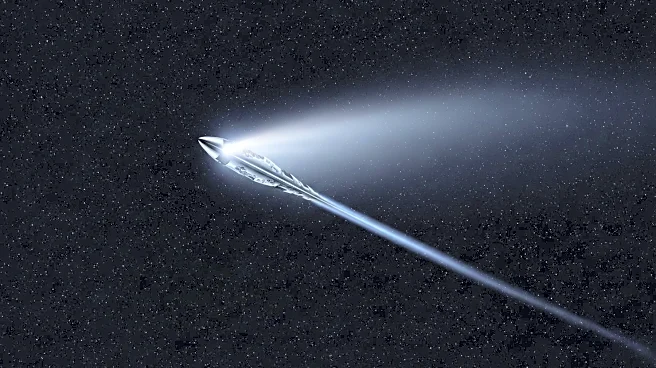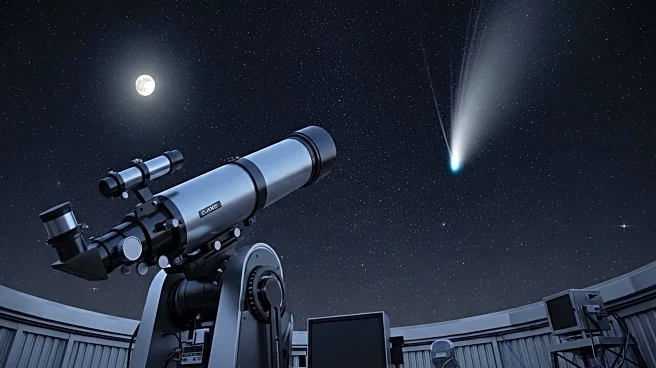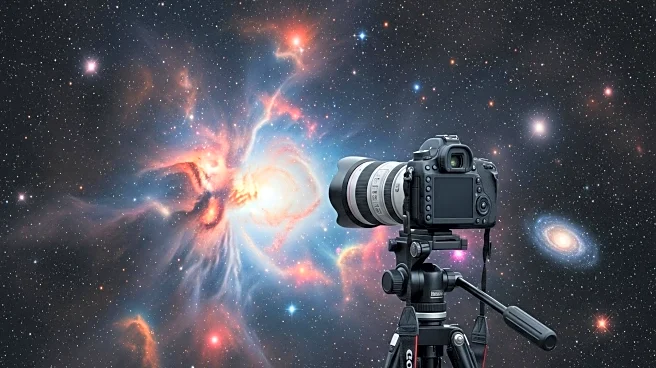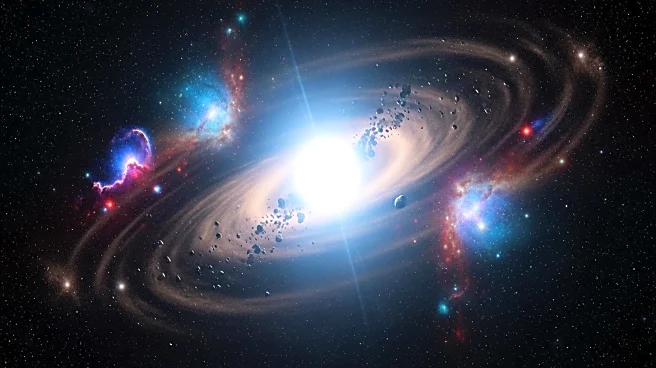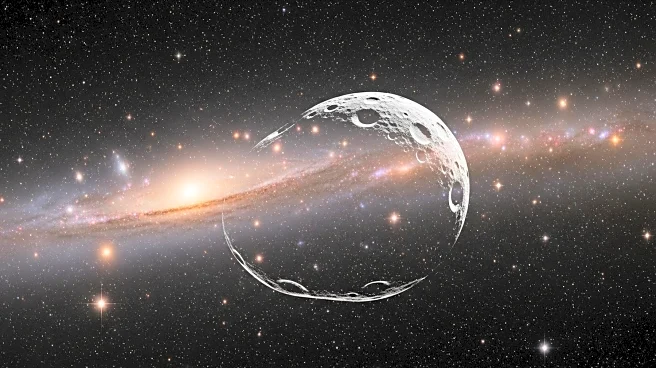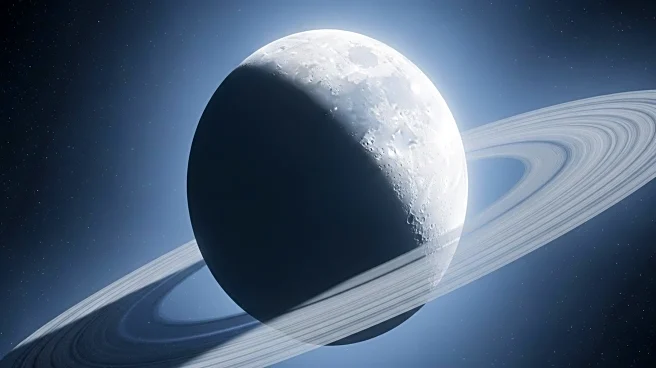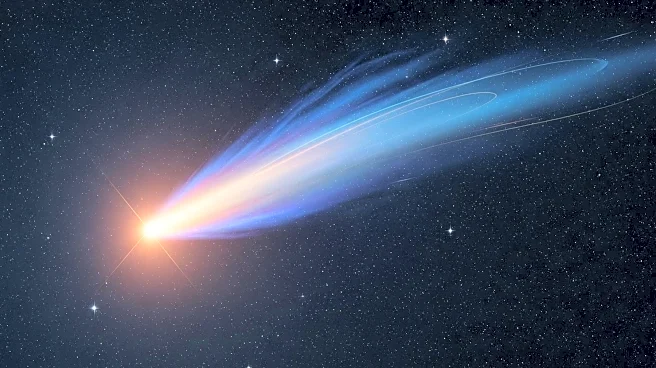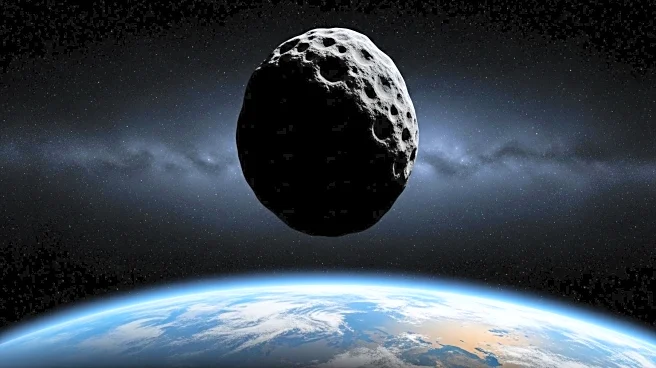What's Happening?
Interstellar comet 3I/ATLAS has been observed emitting a strange green glow during its approach to the Sun. Astrophotographers captured images of the comet during a lunar eclipse, revealing a blue-green gas coma. The comet's chemical composition, including carbon dioxide, nickel, and cyanogen, does not typically cause green fluorescence, suggesting unknown molecules may be responsible for the glow.
Why It's Important?
The unusual green glow of 3I/ATLAS presents a scientific mystery, challenging current understanding of comet chemistry. The discovery prompts further investigation into the comet's composition and the processes causing the glow. Understanding these phenomena can provide insights into the behavior of interstellar objects and the chemical interactions in space. The findings may lead to new discoveries in cometary science and interstellar chemistry.
What's Next?
Scientists will continue to study 3I/ATLAS as it approaches Earth in December, aiming to uncover the source of the green glow. Further observations and analyses will focus on identifying the molecules responsible for the fluorescence. The research may reveal new aspects of comet chemistry and contribute to the understanding of interstellar objects. The comet's close pass to Earth offers a unique opportunity for detailed study.

